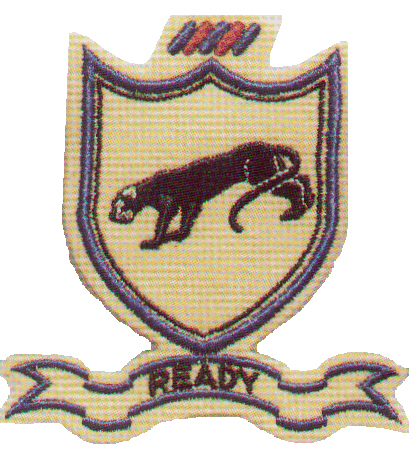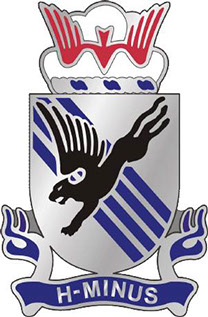
505th Parachute Infantry Regiment
3rd Brigade Combat Team, 82nd Airborne Division
HISTORY OF THE 505TH PIR AND 3RD BRIGADE
The 505th Parachute Infantry Regiment was activated under the Airborne Command, Fort Bragg, N.C., July 6, 1942, at Fort Benning, Ga. The regiment was assigned to the 82nd Airborne Division Feb. 4 the following year.
During World War II, the 505th PIR participated in seven major campaigns and four regimental airborne assaults. On April 28, 1943, the 505th left the New York Port of Embarkation for Casablanca, North Africa, where the regiment underwent six weeks of grueling training. The Regiment then flew to Kairouan, Tunisia, where final preparations were conducted for the 505th's entry into battle.
The regiment made its first regimental-size combat jump July 9, 1943, as it landed behind enemy lines at Gela, Sicily. In its first trial-by-fire, the 505th, though outmanned and outgunned, used raw courage and fighting spirit to block the German Herman Goering Panzer Division and to save the beachhead and the Allied landings. With Sicily secure, the Allies continued attack on the Axis powers with landings on the Italian mainland.
The 505th conducted its second combat parachute attack on September 14, 1943, into Salerno, Italy, becoming the first unit to enter Naples. During the early months of 1944, the Division was moved to England as the allies were preparing for the assault on Western Europe. The largest combined military operation in history, "D-Day", was to be spearheaded by the 82nd and 101st Airborne Divisions.
On June 6, 1944, at 3 a.m., 505th Paratroopers were landing on the Normandy Peninsula for the regiment’s third combat jump. It was one of the first airborne units to hit the ground, and it liberated the first town in France, St. Mere-Eglise. The paratroopers jumped prior to the actual start of the invasion – "H-Hour". Because of that tradition, of being the first into the fight, the 505th motto is "H-Minus".
For their performance during the invasions, the 505th was awarded the Presidential Unit Citation, which is the unit equivalent of the Medal of Honor awarded to individual soldiers. In the words of author Clay Blair, the Paratroopers emerged from Normandy with the reputation of being a pack of jackals – the toughest, most resourceful and bloodthirsty in Europe.
On September 17, 1944, as part of "Operation Market Garden", the 505th made its fourth jump at Groesbeck, Holland – the largest airborne assault in history. During that fierce combat, two lightly armed platoons – at most 80 men – were surrounded by an entire German infantry battalion supported by tanks. The Paratroopers fought back three savage German assaults and held their ground until relieved. The 505th received a second Presidential unit citation.
Later that winter the airborne troopers were thrown into the breach of the famous "Battle of the Bulge". Despite a lack of cold weather equipment, the 505th withstood the bleak winter and stopped fanatic German attacks cold. For its valor in the seven major campaigns the 505th was awarded two Distinguished Unit Citations and three Foreign decorations: the French Forragere, Netherlands Military Order of William, and Belgium Forragere.
After World War II, the 505th returned to Fort Bragg, North Carolina. In 1947 the separate 555th Parachute Infantry Battalion (the "Triple Nickles") the Army's only all-black Airborne unit, was merged into the 82nd when it was re-flagged as the 3rd Battalion, 505 PIR. In June 1957, the regiment was reorganized and re-designated as the 505th Infantry and relieved from assignment to the 82nd Airborne Division. This marked the end of the era of infantry regiments as tactical units and the beginning of the Pentomic era, in which regimental numbers were used for the purpose of perpetuating lineages and honors.
Effective 1 September 1957 the lineage of Company A, 505 PIR was reorganized and re-designated as HHC, 1st Airborne Battle Group, 505th Infantry, and remained assigned to the 82nd Airborne Division (organic elements concurrently constituted and activated). It was relieved on 15 January 1959 from assignment to the 82nd Airborne Division and assigned to the 8th Infantry Division in Germany as part of a rotation that saw both 1-505th and 1-504th depart the 82nd. When the Pentomic era ended, 1-504th and 1-505th were re-flagged respectively as 1st and 2nd Battalions (Airborne), 509th Infantry, elements of the 1st Brigade (Airborne), 8th Infantry Division on 1 April 1963. The colors of 1-505th returned to the 82nd, where they were reorganized and re-designated on 25 May 1964 as the 1st Battalion (Airborne), 505th Infantry, an element of the 3rd Brigade. The brigade was organized into three battalions – 1st Battalion, 505th PIR; 2nd Battalion, 505th PIR; and 1st Battalion, 508th PIR. At 2 a.m. April 30, 1965, the brigade was alerted for combat as part of "Operation Power Pack", the defense of the Dominican Republic against communist insurgents. Within 18 hours, the first C-130 landed at San Isidro Airfield, Dominican Republic. After two months of bitter fighting, the brigade returned to Fort Bragg.
On July 24, 1967, the brigade deployed to Detroit, Mich., to assist local authorities in quelling a civil disturbance. Less than a year later, on February 12, 1968, the brigade was alerted for deployment to the Republic of Vietnam in response to the TET Offensive. After 22 months, the brigade had helped secure the region south of the de-militarized zone and redeployed to Fort Bragg in December 1969. the 505th was the only brigade of the 82nd Airborne Division to participate in the Vietnam conflict.
The brigade deployed to Washington, D.C., in May 1971 to help local and federal officials in their efforts to keep demonstrators from disrupting the daily operation of the Government.
In August 1980, the 1st Battalion (Airborne), 505th Infantry, was alerted and deployed to conduct civil disturbance duty at Fort Indian Gap, Penn., during the Cuban refugee internment.
The brigade deployed its 1st Battalion (Airborne), 505th Infantry, to the Middle East in March 1982 as the first United States member of the Multi-National Forces and Observers (MFO) rotation in the Sinai. The battalion returned home in August 1982 from the most important peacekeeping mission in history.
In October 1983, the brigade deployed to the country of Grenada to evacuate U.S. citizens and restore free government during operation “Urgent Furty.” The brigade remained in Grenada for the duration of the campaign serving first in combat, then in peacekeeping operations until December 1983.
On October 3, 1986, the 505th PIR was reactivated under the auspices of the 3rd Brigade with the 1st and 2nd Battalions, 505th PIR, and the 1st Battalion, 508th PIR, re-designated as the 3rd Battalion, 505th PIR.
In December 1989, Company A, 3rd Battalion, 505th PIR, participated in Operation “JUST CAUSE” and assisted in freeing the country of Panama from the dictator Manuel Noriega. Their efforts assisted the country of Panama to pursue its democratic destiny.
In August 1990, the 505th was airlifted to Saudi Arabia as a part of “Operation Desert Shield.” The 82nd Airborne Division spearheaded a coalition of multinational military forces aimed at deterring further Iraqi aggression and expansion into Saudi Arabia and the enforcement of sanctions against Iraq. The ground phase of operation Desert Storm began February 25, 1991, and saw the brigade move north to conduct combat operations through the Euphrates River Valley. After eight months, the brigade had helped secure U.S. objectives and redeployed to Fort Bragg in April 1991.
In March 1994, the 505th was tasked to implement a new concept for the Army as part of the New World Order. The regiment was tasked to organize, train, certify, and deploy a task force made up of National Guard, Army Reserve and Active duty troops to serve as part of the Multi-National Forces and Observers in the Sinai Peninsula. Task Force 4-505 was activated November 4, 1994, and was made up of 88 percent National Guard and Reservists from 32 different states, as well as 12 percent active duty Soldiers. Task Force 4-505 deployed to the Sinai from January 1995 through July 1995. The battalion was deactivated July 15 1995.
In September 1994, the 505th Parachute Infantry Regiment, along with the rest of the 82nd Airborne Division, was alerted as part of “Operation Restore Democracy” in Haiti. The 505th Parachute Infantry Regiment was scheduled to make combat parachute jumps in order to help oust the military-led dictatorship and restore the democratically elected president. The 82nd’s first wave was in the air, with the 505th loaded on aircrafts awaiting takeoff when the Haitian military dictators, upon learning the 82nd was on the way, agreed to step down and averted the invasions
In December 1994, the 505th Parachute Infantry Regiment participated in "Operation Restore Hope". The 2nd Battalion, 505th Parachute Infantry Regiment, departed for Panama in order to restore order against the upsurge of Cuban refugees. The battalion participated in safeguarding the Cuban Refugees by active patrolling in and around the refugee camps.
From July 2002 to January 2003, the 505th Parachute Infantry Regiment deployed to Afghanistan for "Operation Enduring Freedom". As part of the multinational force, the 505th Parachute Infantry Regiment engaged in combat operations against Al Qaeda and Taliban forces, trained troops for a new Afghan National Army and set the conditions for Democracy by bringing peace and stability to the people of Afghanistan.
From August 2003 to April 2004, the 505th Parachute Infantry Regiment deployed as part of "Operation Iraqi Freedom" to engage in combat operations against terrorists and forces loyal to the former Saddam Hussein Regime, train elements of the Iraqi police, facilities protection service, Iraqi Civil Defense Corps, and New Iraqi Army, and set the conditions for democracy by bringing peace and stability to the people of Iraq.
From January 2004 to April 2004, the 2nd Battalion of the 505th Parachute Infantry Regiment deployed in support of Operation Iraqi Freedom to conduct combat operations and bolster security in Baghdad.
During the month of September 2005, the 505th Parachute Infantry Regiment, minus 1st Battalion, responded to Hurricane Katrina relief efforts in New Orleans. Task Force Panther evacuated more than 5,000 people and rescued almost 1,000 people trapped and stranded at their flooded homes. The task force also assisted in the refurbishment of key facilities throughout the city, such as the Saint Louis Cathedral, the Superdome, the historic French Quarter, medical facilities, housing projects and schools. Paratroopers continuously conducted presence patrols to ensure the city's safety from looters and crime. The task force redeployed four weeks later.
From August 2006 to November 2007, the unit again deployed in support of Operation Iraqi Freedom. The brigade combat team deployed, yet again, for an expected 12 month tour in support of Operation Iraqi Freedom in November 2008 returning one year later.
Credit: Public Affairs Officer - Fort Bragg


Copyright 2020 505th Panther Association
Website Design by Holmesteads






